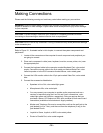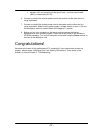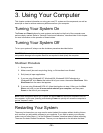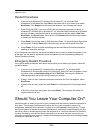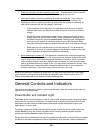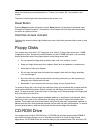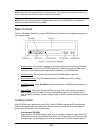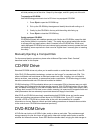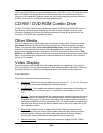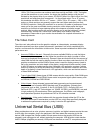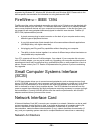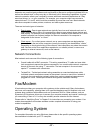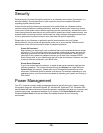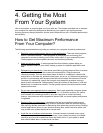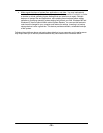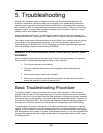
- 24 -
17GB. Also, DVD-ROM drives can read standard audio or data CDs. If your CTL computer comes
with a DVD-ROM drive, please refer to the unit's documentation for complete information on
using your DVD capabilities. External controls and disk loading procedures on these drives are
similar to the controls on a CD-ROM drive described previously.
CD-RW / DVD-ROM Combo Drive
CD-RW / DVD-ROM Combo Drives combine the features of CD-RW and DVD-ROM’s into one
drive that can utilize both types of Media (see the each of these categories above for more
information. External controls and disk loading procedures on these drives are similar to the
controls on a CD-ROM drive described previously.
Other Media
Your CTL computer may include other types of drives and storage media. These may include
tape drives, which are typically used for backup storage due to their high capacity and slow
speed. Your computer might include removable backup drives, such as the Iomega® Zip® or
Jaz® drive. These combine high capacity with high speed and are suited to such tasks as
archiving data, working storage, or applications. Your CTL computer may also contain a DVD-
RAM Drive or a DVD-R drive that can read and write large amounts of information to special DVD
disks. For more information, please refer to the documentation for the specific unit(s) included
with your CTL computer.
Video Display
Computer systems are equipped with video display adapters and, depending on the use(s) of
your new computer, you may have ordered yours with advanced graphics capabilities. There are
two primary pieces in a computer's video/graphics system: the monitor and the video card.
The Monitor
All monitors include the following specifications:
• Overall size
- Monitors are primarily defined by size, such as 15", 17", 19", etc. This figure
is the physical size (measured diagonally) of the picture tube.
• Viewable area
- The viewable area reflects the diagonal measurement of the visible part
of the screen itself. For example, most 15" monitors have a viewable area of 13.5" to
13.9".
• Dot pitch
- The dot pitch specification for a display monitor indicates how sharp the image
can be displayed. It is measured in fractions of millimeters and the smaller the number,
the sharper the image. In a cathode ray tube display with a shadow mask, the dot pitch is
the distance between the holes in the shadow mask. The shadow mask is a metal screen
filled with holes through which the electron beams pass to focus on a single point on the
tube’s phosphor surface.
• Refresh rate
- Refresh means to update with new data. Display monitors must be
refreshed many times per second. Higher refresh rates mean less flickering and thus
reduced eyestrain. Note that the actual refresh rate depends on several variables,
including your current resolution and the capabilities of your video card.
• Maximum resolution
- Standard monitors have resolutions ranging from 640 x 480 to



